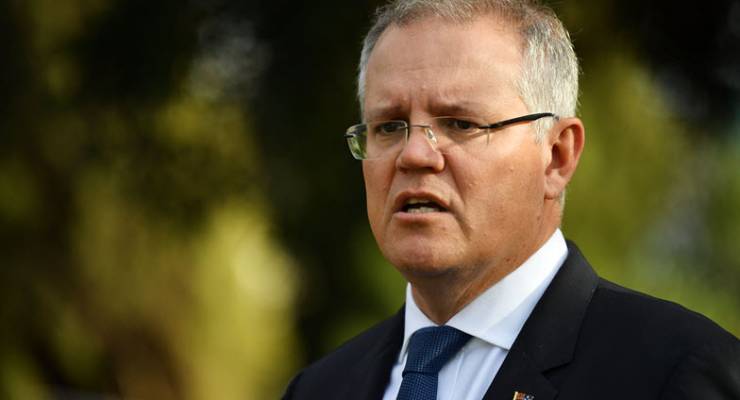
Universally accepted propositions are a rare commodity in politics these days, but there is one point on which Australian political observers can surely agree: the newly dawned election year will be the Coalition government’s last.
However, you don’t have to go far beyond this limited proposition — why is this happening? — to reach the point where the consensus breaks down.
Most who look at polling trends will draw the seemingly obvious inference that the Liberal Party sentenced itself to death when it saw fit to execute yet another leadership coup. But there are no shortage of conservatives who point the finger at Turnbull himself and a moderate ascendancy he is said to have represented, offering various explanations for the failure of polling to record the scale of the disaster he unleashed until after he was gone.
Analysis of polling trends at state-level — which can be viewed in all their gruesome detail on my blog, The Poll Bludger — does offer a few kernels of support for the arguments advanced by Turnbull’s critics.
The primary vote slump in the Longman byelection last July indeed pointed to a haemorrhaging of support to One Nation in Queensland, and more recent poll numbers support the view that Turnbull must wear most of the blame.
One Nation was tracking in low double-figures in the state for most of last year but it appears around a quarter of this has since evaporated, presumably to the advantage of the Coalition. That may well be good news for a few Coalition MPs in regional Queensland and on the fringes of Brisbane, and indeed for any who regard One Nation as a cancerous growth (including those on the left). However, the anti-Turnbull narrative runs into the problem of preferential voting, with the stable two-party trend in Queensland suggesting these were votes that were coming back to them as preferences anyway.
Queensland is, in any case, as good as the Coalition’s post-Turnbull story gets.
Elsewhere the trends suggest that the Coalition is a good 2% worse off in New South Wales than it was under Turnbull, albeit that the situation there is improving a little. They also suggest that a positive trend in Western Australia that gave hope to marginal-seat MPs, including Attorney-General Christian Porter, has sharply reversed. The rug has been pulled from under the Liberal Party in South Australia, where its brand had hitherto been benefiting from a new state government that has developed a reputation for moderation (conservatives take note).
However, the biggest reason to think the Coalition must start preparing for the looming reality of opposition is Victoria.
Despite being the second most populous state, Victoria hasn’t loomed large in the calculations of political strategists over recent decades as only a handful of its seats have been marginal enough to change hands. But as the November state election made clear, an entirely new paradigm now prevails in the state. This brings with it opportunities of which Labor once only dreamt.
This point was illustrated by a Nine report on Liberal internal polling over the weekend that showed the party is heading for an unprecedented wipeout in Melbourne that would spare only Tim Wilson, who holds the bayside seat of Goldstein.
No doubt the true situation isn’t quite as bad as that — the polling was conducted at the inopportune time of the state election campaign, and certain Labor policies should give the government enough ammunition to bring affluent waverers back on board. At a bare minimum though, there are about five seats in Victoria that look gone for all money — without which the Coalition has no conceivable path to victory.
Do you think the states are a fair preview of the federal election? Send your 2019 election predictions to boss@crikey.com.au.








Blaming Turnbull for the bad polls is too easy. I think he polled badly because the party was doing nothing useful for any voters – not even very much for crazed capitalists – and was clearly unable to do anything useful because half the party subscribed to right-wing lunacy and the other half was too frightened to fight. One must wonder how much worse the polls might have been if Dutton was PM and was pushing the sort of batty nonsense the polls tell us most Australians disagree with. A majority seem to believe that Turnbull wasn’t in fact left-wing enough. He gave us a rotten NBN, caved in to the climate flat-earthers, wasn’t game to press forward with anything he was naively imagined to believe in.
Hope your analysis of Queensland doesn’t mean that Dutton will keep his seat.
I don’t think that anyone interested in politics has a clue how the gp will vote. All this money starting to be thrown around will surely please some voters. I hate it, I think why didn’t you spend it before if you had it especially on health initiatives. However, I can’t see how there is a surplus in the offing (when?) if the govt is splashing money around. Stealing from the less well off again, which doesn’t include those whinging about loss of cash refunds from franking credits.
By the time that Turnbull faced his ‘own’ election three years, ago, he had already been exposed. His election manifesto was absolutely threadbare: in fact, during what was an unusually long election campaign (why?), it consisted of nothing more than endlessly repeating the mantra of ‘Jobs and Growth’. There was no platform, and there were no policies. This vacuousness, and his already evident capitulation to the nasties of the far-right, destroyed his polling numbers and then destroyed him as PM, because he wasn’t far-right enough.
So where does that leave “safe seats for women”?
Still time to fling Scoundrel Morrison out and replace him with Vladimir Dutton to ensure a LNP win come next election.
And if they lose it will be da Labor Party fault, Beel Shortin bad, da unions bad, union thugs bad, industry super funds bad.